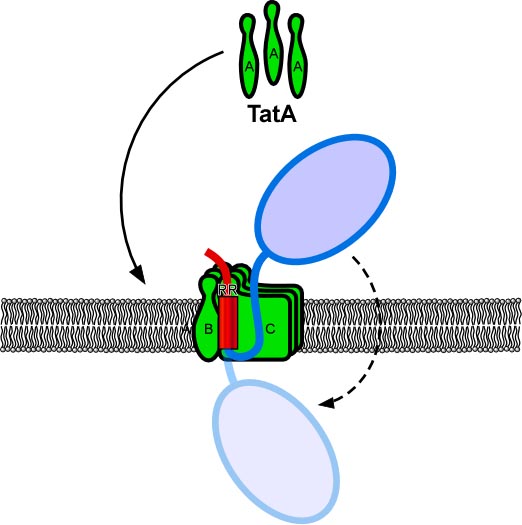Ralf-Bernd Klösgen
Prof. Ralf Bernd Klösgen

Institute of Biology/General Botany
Weinbergweg 10
06120 Halle (Saale)
phone: +49 (0) 345-55 26200
klosgen@pflanzenphys.uni-halle.de
Tat-dependent protein transport across the thylakoid membrane:
Characterisation of functionally relevant amino acid residues within TatA
The twin-arginine translocation (Tat) pathway is unique with respect to its property to translocate proteins in a fully folded conformation across ion-tight membranes. In chloroplasts and Gram-negative bacteria, Tat translocase consists of the integral subunits TatB and TatC, which are assumed to constitute the membrane receptor, and TatA, a bitopic membrane protein being responsible in a yet unknown manner for the membrane translocation step. Three deviating working models are currently discussed: (a) TatA translocation pores with different or variable diameter to facilitate membrane transport of the various Tat substrates, which are all distinct in size, (b) TatA-induced membrane weakening resulting in translocation of the substrate directly through the lipid bilayer, and (c) a catalytic or regulatory function of TatA facilitating membrane transport by the TatBC complexes. Despite distinct in detail, all three models ascribe TatA a central role in the translocation process. To clarify this role in more detail, we aim for characterising the functional properties of numerous TatA derivatives from plants and bacteria. Making use of the observation that soluble TatA, which has recently been identified in the chloroplast stroma, is able to reconstitute protein transport properties of thylakoid vesicles depleted of TatA, we will generate and characterise a multitude of chimeric and/or mutant derivatives of TatA from different sources. By this means we should be able not only to identify regions and/or amino acid residues within TatA that are important for mediating membrane translocation of Tat substrates but furthermore to clarify the actual mechanism of TatA function in the translocation process.

